• Title: The Heliosphere’s Interstellar Interaction: No Bow Shock
• Authors: D.J. McComas et al.
• First Author’s Institution: Southwest Research Institute, San Antonio TX
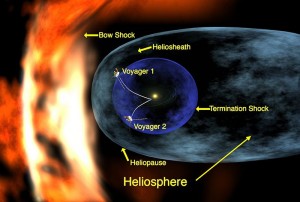
Figure 1: Old model of the heliosphere, as well as the locations of Voyager 1 and 2 as of 2005. Sun (at center of figure) is moving to the left through the ISM. Image credit: NASA/Walt Feimer
What is the heliosphere?
A stream of charged and energetic particles continuously coming off the Sun, called the solar wind, extends outwards and essentially blows a bubble into the local interstellar medium (LISM) around us. This bubble of charged particles is what is known as the heliosphere.
The heliosphere has a layered structure (see Figure 1 for our previous understanding of what it looks like). The wind first passes through the termination shock, the point at which it is slowed to subsonic speeds. It then continues through a region called the heliosheath, before reaching the heliopause, which is the point at which the pressure from the wind balances the pressure from the LISM and the heliosphere officially terminates. Outside of that was hypothesized to be a bow shock (see Figure 2): a region wherein the LISM becomes shocked and turbulent as a result of its collision with the heliosphere as the sun moves through the LISM.
Our understanding of the structure of the heliosphere has changed fairly dramatically, however, since the launch of the Interstellar Boundary Explorer (IBEX, for short).
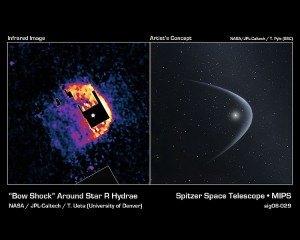
Figure 2: Example of a bow shock that is formed around the star R Hydrae as it passes through the ISM. The left panel is a Spitzer image; the right panel is an artist's conception.
IBEX
The NASA satellite IBEX (see this astrobite for more on IBEX) was launched in 2008 with the goal of measuring the energetic neutral atom (ENA) emissions that result from collisions between the solar wind and LISM neutral atoms at the heliospheric boundary. The ENA measurements should help to illustrate the locations and shapes of the termination shock, heliopause, and bow shock.
So far, IBEX has done a very good job of challenging our models of the heliosphere. One of its first discoveries was a completely unexpected ribbon of ENA emission nearly encircling the heliosphere (see Figure 4), presumably ordered by the LISM magnetic field and indicating that this field has a much stronger influence on the heliosphere than anyone had originally thought.
The latest interpretation of IBEX data again leaves our understanding of the heliosphere in shambles: the authors of this paper show that, based on IBEX data, the heliosphere appears to have no bow shock after all.

Figure 3: Parameter space identifying combinations of ISM density, temperature, and magnetic field that do and don't produce a bow shock ahead of the heliosphere. For reasonable combinations of these parameters, no bow shock is possible. Figure 3 in the paper.
No bow shock?
In this paper, the authors use IBEX measurements of ENA emission to recalculate the velocity of the LISM relative to the Sun. The resulting speed and direction are both slightly different from calculations based on previous measurements made by the older space probe Ulysses; IBEX’s speed is 23.2 km/s and Ulysses’ is 26.3 km/s. Though a small difference, this nonetheless produces a 22% decrease in the pressure of the LISM due to its motion at the interface between it and the solar wind, significantly increasing the importance of the LISM magnetic pressure. If magnetic pressure is more important, the speed needed to form a shock goes up, because magnetic fields tend to suppress shock formation. Thus higher values of the LISM magnetic field mean that it is less likely that a bow shock will form ahead of the heliosphere.
Using these new numbers, the authors then develop a simple analytical model of the heliosphere to determine the conditions under which a bow shock would now be able to form. By solving the Rankine-Hugoniot equations for shocks and taking into account effects such as local heating of ionized plasma, they calculate the likelihood of a bow shock forming given different values of the magnetic field within the LISM.
A combination of IBEX measurements from the ENA emission ribbon and data from Voyager 1 and 2 as they crossed the termination shock yields a predicted LISM magnetic field strength of significantly greater than 3 μG. In order to form a bow shock, however, the field strength would need to be less than roughly 2.2 μG (see Figure 3).
Conclusion
This study demonstrates that it’s extremely unlikely that the bow shock that has been predicted for decades to exist ahead of the heliosphere is actually able to form, given the parameters of the LISM as measured with IBEX. Our new understanding of the heliosphere’s structure, which replaces the bow shock with a bow “wave” of unshocked but slightly denser material, is illustrated in Figure 4. IBEX’s revelations suggest that we are due for a major reformulation of our understanding of the heliosphere and how it interacts with the interstellar medium. Luckily, we can expect significant new results from IBEX in the future, as well as new data from the Voyager satellites as they cross the heliopause in ~2015. With any luck, the data from these missions will help us to improve the picture of this bubble in which we live.

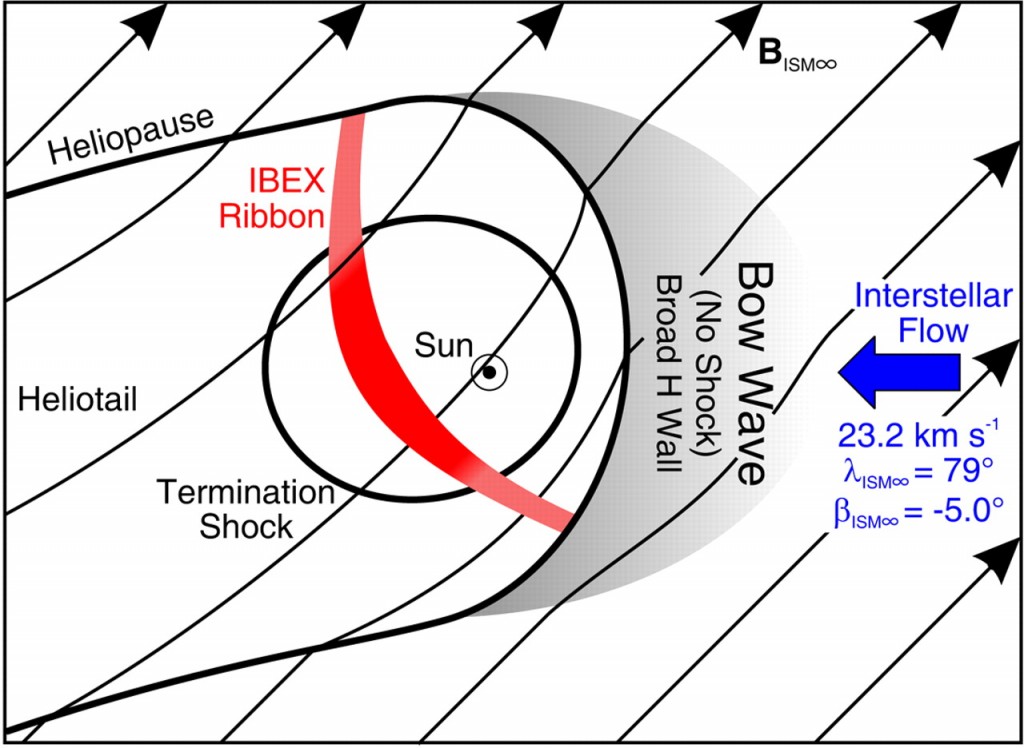

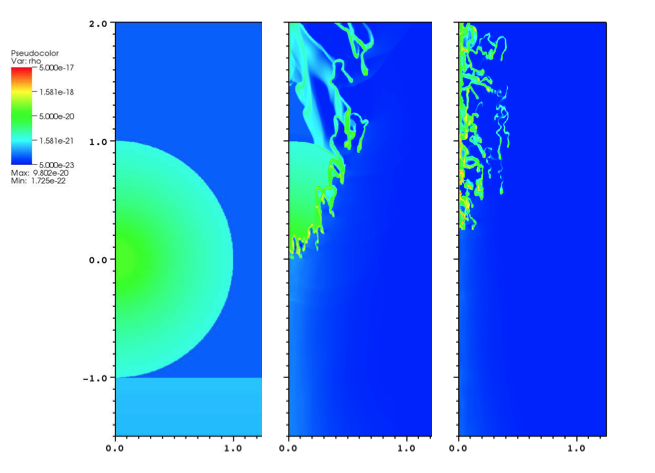
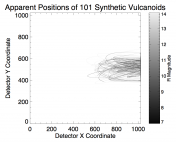

Trackbacks/Pingbacks